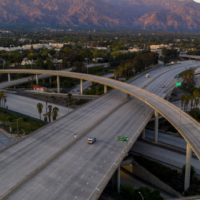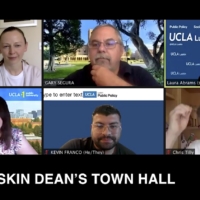Digital Divide Among U.S. Schoolchildren Is Deepening, Report Finds
A new report by the Center for Neighborhood Knowledge at UCLA Luskin measures the digital divide in American schools, which threatens to undermine the educational achievement of low-income and minority students for years to come. Disparities in access to computers and adequate internet service predate COVID-19 but have deepened since the pandemic’s outbreak, the study found. The analysis used data from the U.S. Census Household Pulse Survey covering the latter part of the 2019-2020 school year, when schools were forced to halt in-person learning. All groups experienced some challenges in providing adequate computer access and internet service for children’s educational purposes, but the difficulties were greatest in Hispanic, Black, low-income and younger households, according to the study. It also found a link between the lack of access to technology and the parents’ level of educational attainment. Researchers are currently assessing data from the start of the 2020-2021 school year to identify lingering disparities. The study, conducted in collaboration with the public interest research group Ong & Associates, aims to guide educators and policymakers in formulating effective programs to ensure a fair and equitable school system. “It is essential for elected officials and business leaders to act now to address the potential long-term social and economic effects of this health crisis,” the report’s authors said. “This is true especially given the added challenge the pandemic places on minority, low-income, less educated and young families trying to educate their children to succeed in the new information age.”










Leave a Reply
Want to join the discussion?Feel free to contribute!